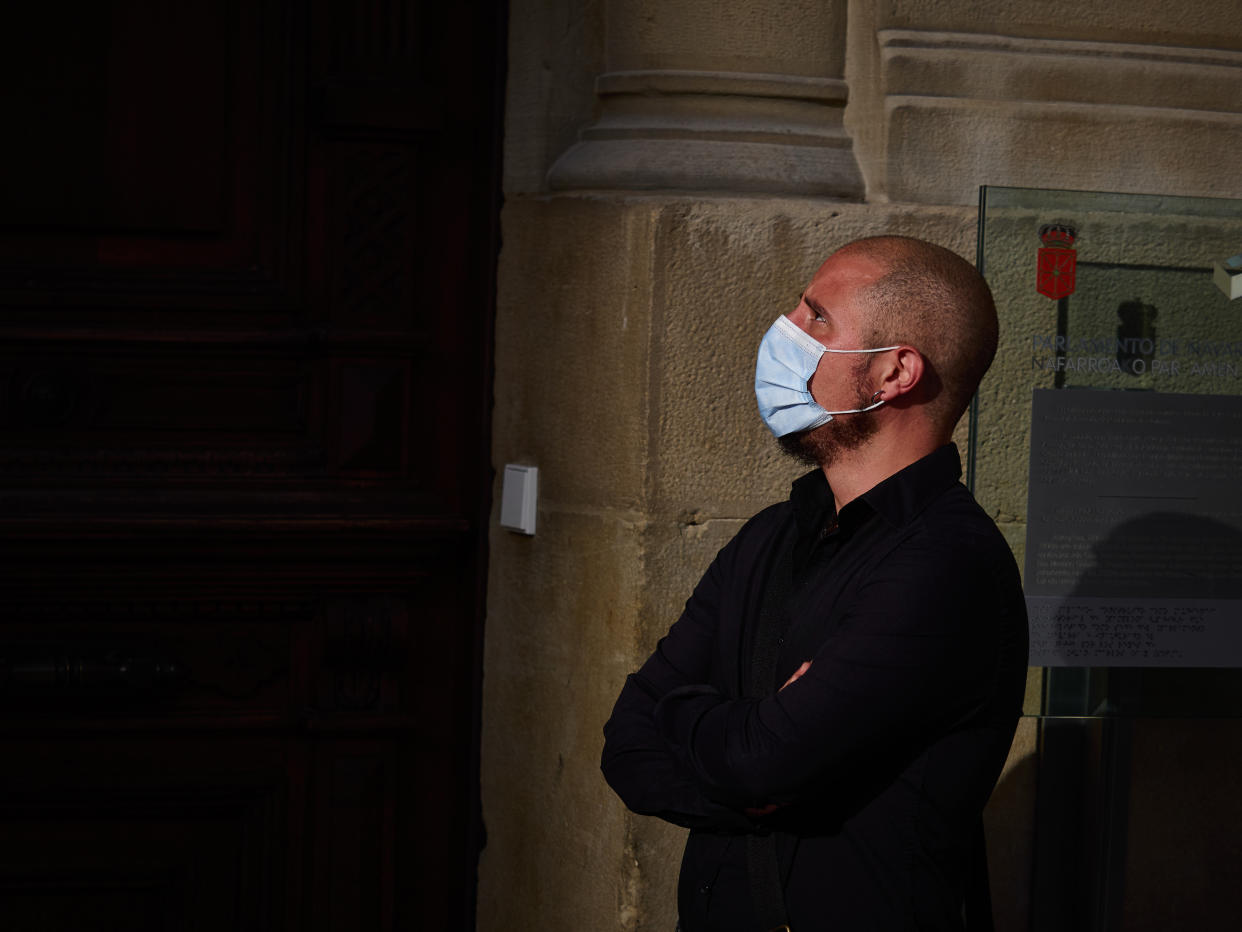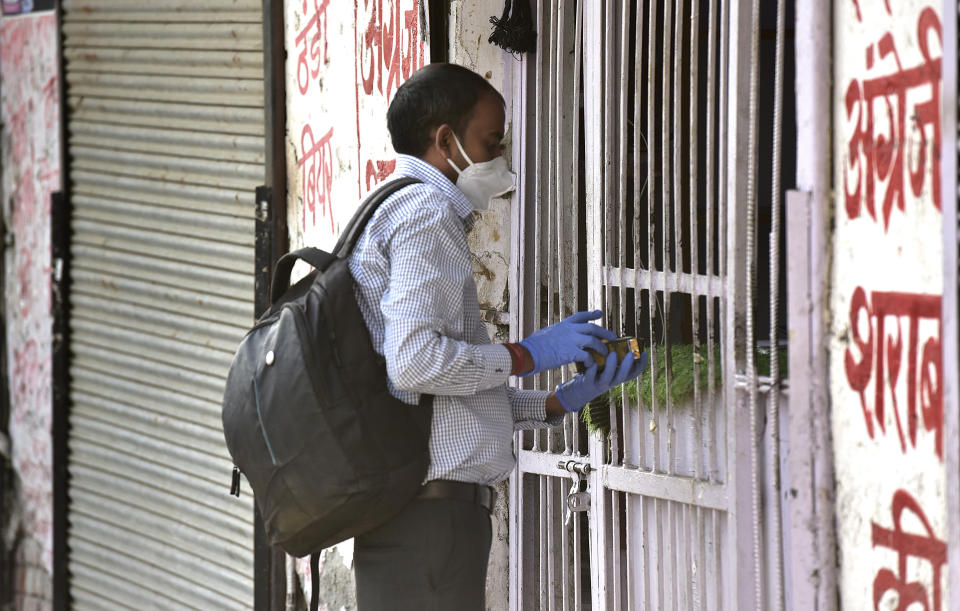Coronavirus: Small study finds traces of the pathogen in sperm

A small study has detected traces of the coronavirus in semen.
Doctors from Shangqiu Municipal Hospital in China looked at the sperm samples of 38 men who tested positive for the infection.
Results revealed six (15%) of the men had detectable traces of the virus in their semen.
Experts have said the “interesting” study “raises the possibility” the coronavirus “might be transmissible via sexual contact”.
They added, however, the participant number was small, with most semen samples coming back clear.
With this study contradicting other research that found no trace of the virus in sperm, the experts have called for further investigation into the subject.
Early research suggests the infection is mild in four out of five cases, however, it can trigger a respiratory disease called COVID-19.

Coronavirus: ‘Abstinence might be considered’ to ward off infection
The coronavirus mainly spreads face to face via infected droplets expelled in a cough or sneeze.
There is also evidence it may be transmitted in faeces.
Latest coronavirus news, updates and advice
Live: Follow all the latest updates from the UK and around the world
Fact-checker: The number of COVID-19 cases in your local area
Explained: Symptoms, latest advice and how it compares to the flu
Feeling there was little evidence around the role of sperm, the Shangqiu doctors looked at all confirmed male patients over 15 who were admitted to the hospital between 26 January and 16 February.
Fifty patients were identified, however, 12 were unable to provide a semen sample due to erectile dysfunction, being in a comatose state or dying prior to the collection.
Of the 38 men included in the study, 23 (60%) had achieved “clinical recovery”, while the remaining 15 were still infectious.
The results, published in the journal JAMA Network Open, revealed six of the men had traces of the coronavirus in their semen samples.
Four of these patients made up the 15 who were infectious.
The remaining two were recovering, which the doctors called “particularly noteworthy”.
The scientists wondered whether “imperfect barriers” may “seed” the virus in a man’s reproductive tract.
The pathogen may not replicate “down below”, but could “persist”, taking advantage of the “privileged immunity of testes”.
Twenty-seven viruses are known to be detectable in semen, even infections that are not thought to be sexually transmitted, wrote the scientists.
They acknowledged their study was small with a short follow-up period.
Nevertheless, the scientists argued it cannot be ruled out that the coronavirus could be transmitted via intercourse.
If that proves to be the case, “sexual transmission might be a critical part of the prevention of transmission”, particularly considering the virus was detected in apparently recovered patients.
“Abstinence or condom use might be considered as preventive means for these patients,” wrote the scientists.

Study ‘at odds’ with other research
Professor Allan Pacey from the University of Sheffield called the study “interesting”, but pointed out it is “at odds” with another Chinese paper that found no evidence of the coronavirus in semen samples from 34 patients.
Nevertheless, he claimed the results “open up the possibility that one route of infection may be through sexual contact”.
Professor Pacey added, however, there are “methodological challenges” in uncovering the source of bacteria or viruses in the reproductive tract.
It is also often unclear whether the pathogens are present in sufficient numbers to be transmitted during intercourse.
“However, we should not be surprised if the virus which causes COVID-19 is found in the semen of some men, since this is been shown with many other viruses such as Ebola and Zika,” said Professor Pacey.
Professor Richard Sharpe from the University of Edinburgh noted the study was “small”, adding “the majority of infected men, and especially those in the recovery phase, did not test positive for [the] virus in their semen”.
“As the authors point out, this finding raises the possibility that COVID-19 might also be transmissible via semen (and thus via sexual contact), perhaps including during the recovery phase, which would have disease management implications,” he said.
“Whilst this is a small study that leaves many important questions unanswered, it suggests obtaining answers to such questions should be an additional priority considering our global need to understand the dynamics of person-to-person transmission of COVID-19”.
This is not the first time research has suggested traces of the coronavirus may be found in a man’s reproductive tract.
Scientists from the Montefiore Medical Center in New York found a receptor for the pathogen was expressed in high levels in the testicles, but not ovarian tissue.
“Taken together, these observations demonstrate for the first time that male subjects have delayed viral clearance of [the coronavirus],” they wrote on the online research site medRxiv.
The New York scientists wondered if this expression suggests the testicles may act as a “reservoir” for the virus and play a role in “viral persistence”.
Other experts called the findings “theoretical” and “far from sufficient”, dismissing the idea this may be why more men are dying with the coronavirus than women.
Up to the week ending 24 April, more men had died with the infection than women in England and Wales.
The exception was the one-to-14 age group, where two girls have died and no boys.
The most pronounced difference was in those between 75 and 84, where 5,604 men died with the coronavirus, compared to 3,511 women.

What is the coronavirus?
The coronavirus is one of seven strains of a virus class that are known to infect humans.
Others cause everything from the common cold to severe acute respiratory syndrome (Sars), which killed 774 people during its 2002/3 outbreak.
Since the coronavirus outbreak was identified, more than 3.7 million cases have been confirmed worldwide, according to Johns Hopkins University.
Of these cases, over 1.2 million are known to have “recovered”.
Globally, the death toll has exceeded 264,400.
Although the coronavirus mainly spreads via coughs or sneezes, there is also evidence it can survive on surfaces.
Symptoms include fever, cough and slight breathlessness.
The coronavirus has no “set” treatment, with most patients naturally fighting off the infection.
Those requiring hospitalisation are given “supportive care”, like ventilation, while their immune system gets to work.
Officials urge people to ward off the coronavirus by washing their hands regularly and maintaining social distancing.




